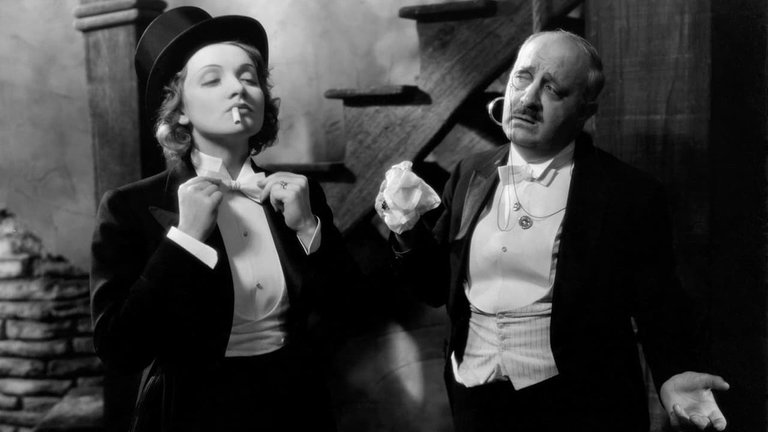Film Review: The Celluloid Closet (1995)

While it is quite common that a perception of certain film can change over time, it is somewhat rare that it could happen because of another film. It is even rarer that perception of numerous films can be altered because of the single film. This achievement, which is for the obvious reason visible mostly to die-hard cinephiles, was made by The Celluloid Closet, 1955 documentary directed by Rob Epstein and Jeffrey Friedman.
The film is based on The Celluloid Closet: Homosexuality in the Movies, 1981 book by gay rights activist and film historian Vito Russo. Like the book, the film deals with the way Hollywood studios and film makers dealt with gay and lesbian themes throughout the history. Narrated by Lily Tomlin (with narration written by writer Armistead Maupin), The Celluloid Closet tells the tale which begins in the era of Silent Hollywood, when homosexuality, while still being illegal and frowned upon by mainstream, was actually recognised by film makers and even used as, mostly comical, element in their works, mostly through somewhat controversial stereotype of “sissy”. Things, however, changed in 1930s with introduction and strict enforcement of MPAA Production Code, which specifically barred any mention of “sexual perversion”. Hollywood film makers willing to deal with gay characters and themes had to be extra creative in order to evade censorship, using imaginative double entendres, suggestions and what historians would later call “codes”. As censorship got lax in 1960s, homosexuals began to be portrayed, but mostly as deviants or predators to be feared of. Only in 1970s homosexuality begins to enter Hollywood as fact of life, a process that would continue and lead to sympathetic gay character in “Oscar”-winning Philadelphia.
Epstein and Friedman, who are both gay, became famous for Commons Threads: Stories from the Quilt, 1989 “Oscar”-winning documentary about AIDS crisis and its impact on gay community. However, anyone expecting angry activist film lambasting the evils of bigotry, homophobia and institutional hypocrisy is going to be surprised. The Celluloid Closet was released in mid 1990s, shortly after ascent of Bill Clinton to White House and clear shift in American politics and culture from conservativism of the Reagan era. Gays and lesbians, who, until that time had been marginalised, were not only accepted into mainstream but were also becoming one of its most visible and loudest part, with Hollywood enhancing its effect. This allowed plenty of writers, scholars, actors and film makers, mainly gay, to appear in the film to be interviewed and give their interesting insight. General tone of the film is light-hearted and celebratory, clearly pointing out to the incalculable contribution gay and lesbian people gave to the highest achievements of American film industry and the way homosexuality, even under most oppressive circumstances, found the way to be expressed in Hollywood films. Accompanied by likeable music score by Carter Burwell, The Celluloid Closet presents large number of clips from Hollywood films and gives often humorous comments on hidden gay subtext of certain themes and characters. Although this game wasn’t particularly new (a year earlier Quentin Tarantino’s character famously exposed Top Gun in Sleep with Me), it was The Celluloid Closet, especially segment with Gore Vidal explaining his interpretation of characters in Ben-Hur, that made it popular among cinephiles who were beginning to playfully find hidden, real of imagined subtexts in classic films. The Celluloid Closet, although very entertaining, is not without its flaws, however. The switch between oppressive world of Production Code and permissive and unrestrained world of 1970s New Hollywood isn’t properly explored or explained. Perhaps the authors lacked the will or desire to bring the issue of the film in context of broader socio-economic changes in 1960s. Part for it wasn’t their fault; some personalities, for one reason or another, refused to be interviewed for the film and certain studios refused permission for clips of their films to be used. This is the reason why The Celluloid Closet looks slightly unfinished. But, in light of today’s stiffling “woke” sentiments, the world described in that documentary looks like much better, tolerant, playful place with much more wit and creativity.
RATING: 6/10 (++)
Blog in Croatian https://draxblog.com
Blog in English https://draxreview.wordpress.com/
Leofinance blog https://leofinance.io/@drax.leo
Unstoppable Domains: https://unstoppabledomains.com/?ref=3fc23fc42c1b417
Hiveonboard: https://hiveonboard.com?ref=drax
Bitcoin Lightning HIVE donations: https://v4v.app/v1/lnurlp/qrcode/drax
Rising Star game: https://www.risingstargame.com?referrer=drax
1Inch: https://1inch.exchange/#/r/0x83823d8CCB74F828148258BB4457642124b1328e
BTC donations: 1EWxiMiP6iiG9rger3NuUSd6HByaxQWafG
ETH donations: 0xB305F144323b99e6f8b1d66f5D7DE78B498C32A7

https://twitter.com/21393347/status/1618253461384220672
The rewards earned on this comment will go directly to the people( @drax ) sharing the post on Twitter as long as they are registered with @poshtoken. Sign up at https://hiveposh.com.